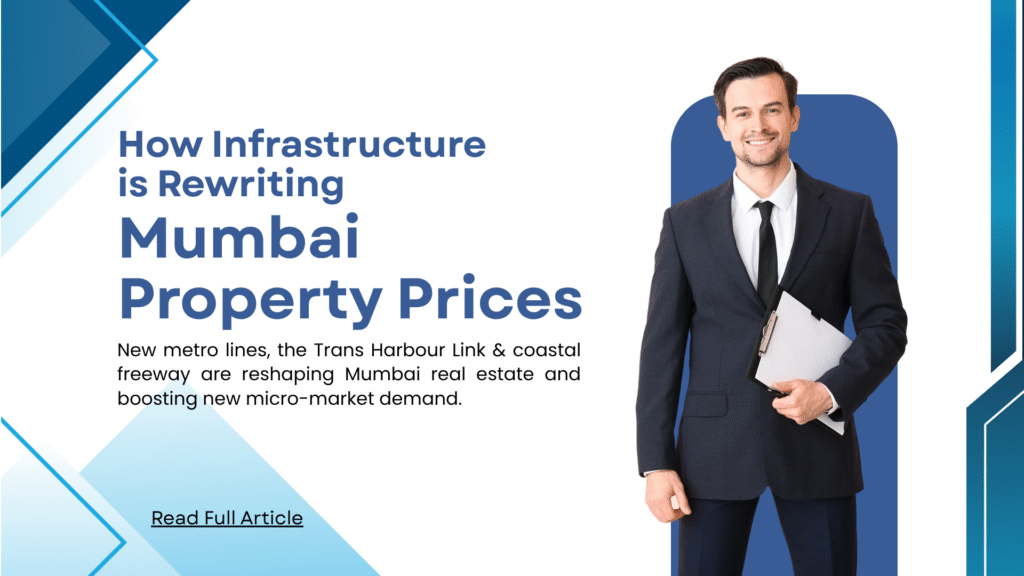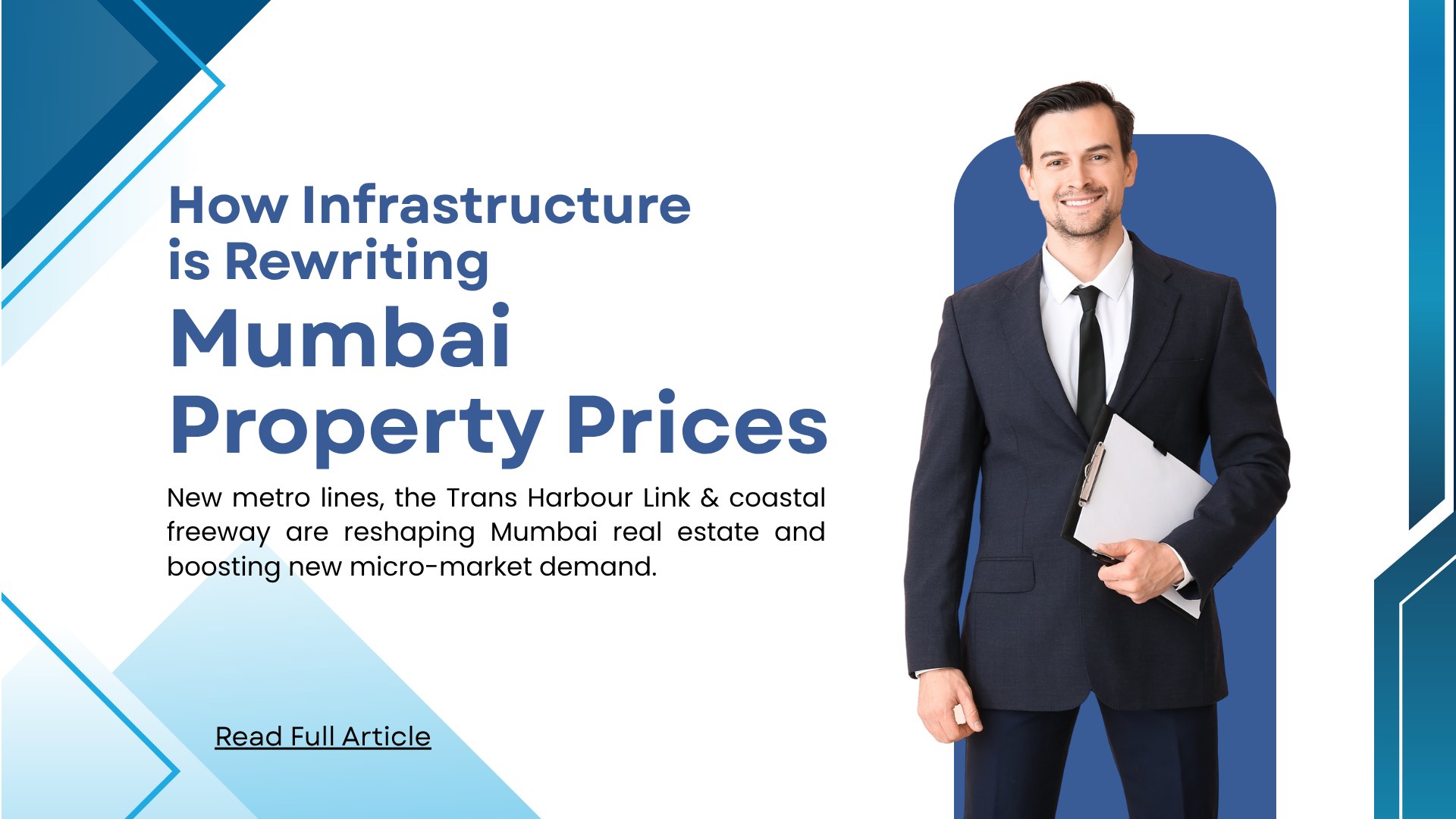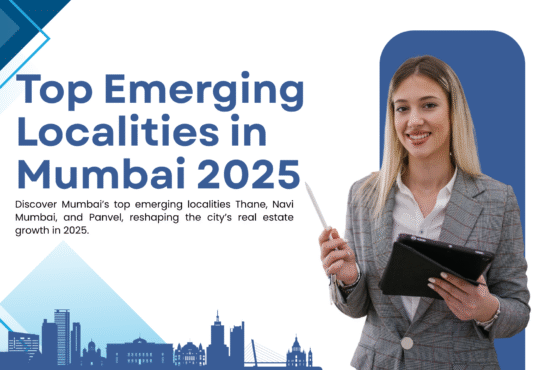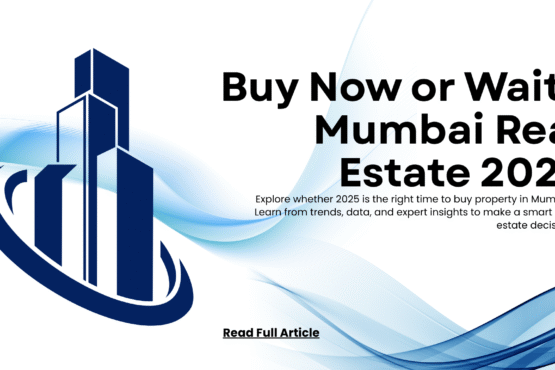
Metro Lines, Trans Harbour Link & Freeway: How Infrastructure is Rewriting Mumbai’s Property Prices
For years, Mumbai’s biggest pain points have been the same:
✔ Endless traffic
✔ Long, tiring commutes
✔ Extremely high prices in prime areas
Because of this, most homebuyers were stuck between two choices: pay a fortune to stay in the city, or move far out and spend hours on the road. But that equation has changed.
Mumbai’s recent infrastructure wave, Metro expansions, Coastal Road, Trans Harbour Link (MTHL), and Eastern Freeway, has unlocked a silent real estate revolution.
1. Metro Lines Are Shrinking the City
As new Metro corridors connect Western, Central, Harbour, and Thane belts, previously “far” locations are becoming well-connected micro-markets.
What this means for buyers:
- Faster commute to work hubs
- Less dependency on road traffic
- Premium of 8–20% seen near operational metro stations
Micro-markets gaining momentum:
- Kanjurmarg – Cheaper alternative to Powai with metro + Eastern Express Hwy connectivity
- Dahisar & Kandivali East – After Metro Line 2A & 7, demand jumped for mid-priced homes
- Mulund – Smooth access to Thane, Navi Mumbai and Western suburbs creates higher rental demand
For many families, the Metro is a game-changer:
“Instead of 1.5 hours by road, I now reach office in 35 minutes.”
This convenience translates into higher absorption and rising prices.
2. The Mumbai Trans Harbour Link: Navi Mumbai’s Big Moment
MTHL has turned Panvel, Ulwe, and Taloja into serious investment hotspots.
Earlier:
⛔ Considered “too far”
⛔ Low-speed connectivity to mainland Mumbai
Now:
✅ 20 minutes to Sewri from Nhava
✅ Direct access to Mumbai, upcoming Navi Mumbai Airport & JNPT
✅ Surge in residential and commercial launches
Price impact so far:
- 10–30% appreciation in 2 years
- Higher migration of buyers shifting from expensive Mumbai suburbs
Friends who once dismissed Ulwe or Panvel as “investment only” are now moving there because MTHL has made it livable and well-connected, fast.
3. Coastal Road & Freeways: South Mumbai Connectivity Like Never Before
The Coastal Road has reduced peak-hour travel time by nearly half.
Suddenly, places like Worli, Prabhadevi, and Breach Candy are experiencing:
- Faster commute to Nariman Point & Bandra
- Increasing demand for luxury homes
- Growing rental interest from corporate CXOs
Even Chembur, Wadala, and Eastern suburbs saw price jumps thanks to the Eastern Freeway, making South Mumbai reachable in minutes.
Why Prices Are Rising in New Micro-Markets
Infrastructure does two things that completely shift property value:
✔ Reduces travel time – the biggest pain point for Mumbai
✔ Increases livability – schools, malls, jobs become more reachable
This drives:
- Higher demand
- Faster sales
- Better rental yields
- Appreciating resale value
Places once called “too far” are now smart investments.
What Buyers Should Look For
If you’re considering buying or investing:
✔ Check upcoming metro stations within 1–2 km
✔ Compare current vs expected travel times
✔ Look for social infrastructure (schools, hospitals, malls)
✔ Track future government plans, not just existing projects
Infrastructure-led appreciation is real and already visible.
Mumbai’s future is no longer limited to traditional hotspots like Andheri, Bandra, or Powai. Infrastructure has created new growth corridors, making homes more affordable and commutes more human.
For buyers and investors, this is the right moment.
When connectivity improves, prices don’t just rise, they leap.



